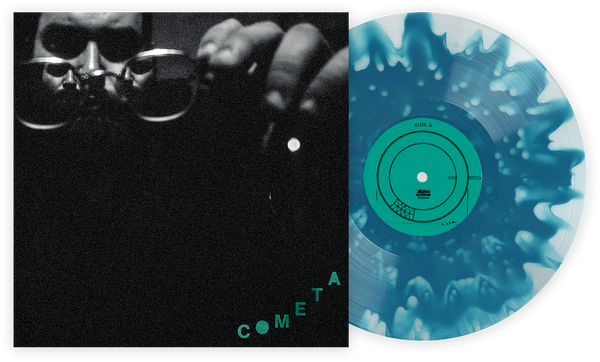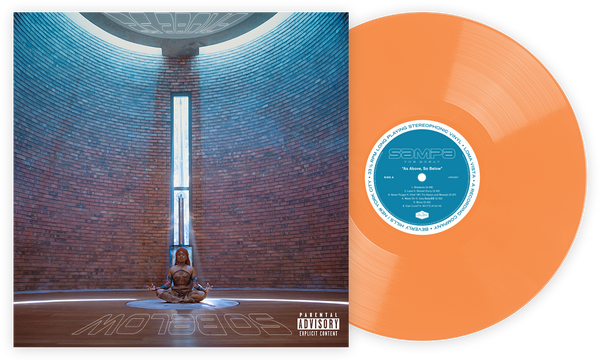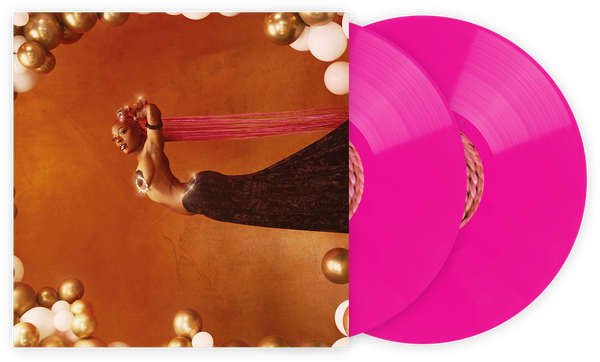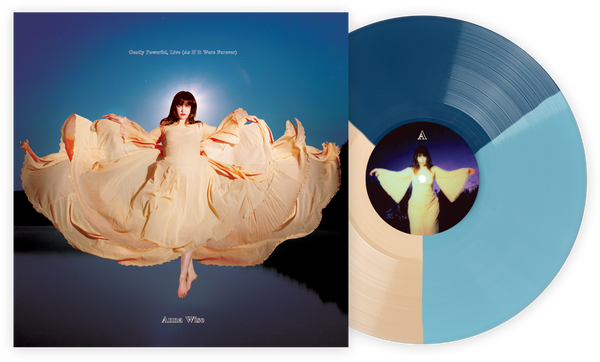The negation in “no wave” has a double-meaning. First, there’s no real wave; no specified provisos for taking part in the ethos. Second, that in itself is the affirmative proviso: to be without a concrete ethos and play music as abstractly as possible. When musicians in the late ’70s and early ’80s were churning up some weird, disparate stuff throughout Greenwich Village, avant-punk group DNA could be just as “waveless” as chameleonic cellist/producer/composer Arthur Russell, who was writing classical music. While the term mainly gets applied to the grittier ensembles like DNA or Swans, “no wave” overall describes a melange of underground artists—in addition to punk: classical, disco, jazz—jaded by conventions, hankering to warp them like crazy.
Incredible bands from around the East Coast are still doing authentic no wave—among them are Zs, Pill, Palm and Horse Lords. For a style that implies timelessness, it’s expected, though still really exciting, that current bands are interpreting no wave in such a fresh, new fashion. Below, these 10 albums capture the fortitude and miasmic tonal beauty eventually inherited by the mentioned contemporaries, and which defined no wave in the ‘70s/’80s.

Various Artists: No New York
Brian Eno curated and recorded each of the bands on his genre-defining comp for Antilles Records, a subdivision of Island. This is a four-way split that, by essence, serves as an essay on the city’s manifold bastardizations of punk at the time. It spotlights Contortions’ emphasis on freeform saxophone and organ; Teenage Jesus and the Jerks’ deliberately prolonged intervals of shrill, ear-wrenching guitar; the scatterbrain musicianship of Mars, suspenseful and constantly flirting with utter tonal deterioration; and the proto-dance-punk of DNA, grinding down krautrock and blues into some dusty substance all at once vile and entrancing.

Glenn Branca: Lesson No. 1
He’s best known for his towers of ballasted, disharmonious guitars—there’s a track on here straightforwardly called “Dissonance”—but the Branca approach isn’t limited solely to what’s musically dour. Steve Reich tends to be name-dropped whenever Branca gets talked about; although the latter’s music is much more unsteady and volatile, the comparison is partially apt. “Lesson No. 1 for Electric Guitar” starts disharmonious and evolves into something—bearing qualities Reich has invariably flaunted—triumphant and persistent. This was Branca’s debut release, and features playing from future Sonic Youth-ers Thurston Moore and Lee Ranaldo on “Bad Smells,” the bonus track that comes with the 2004 reissue.

Dinosaur L: 24->24 Music
Before deviating toward classical music and writing airy pop music for his lone cello on World Of Echo, Arthur Russell had disco hits like “Is It All Over My Face” by Loose Joints—possibly his biggest, but he never released a proper album under that project. 24->24 Music, from his other project Dinosaur L, offers a full album of Russell’s signature oddball disco. A lot of melodic motifs recycle throughout the hour: songs are the same BPM and Julius Eastman plays the same haunting, diminished sequence of organ chords every other track or so. It’s Russell promoting unity, and it all leads up to their classic “Bang That!” With three different remixes on the album, when it first got played at landmark nightclub The Loft, the Francois K mix of “Bang That!” was what instantly galvanized a generation of New York’s queer youth.

Liquid Liquid: Optimo EP
One of the most important as well as tersest basslines was a product of amateur playing. The members of Liquid Liquid had the most basic of musical prowess, but Richard McGuire’s brief hammer-on between the notes A and C—probably improvised passively during a jam session—foreshadowed decades of worship and lawsuits. LCD Soundsystem, whom they opened for at that band’s 2011 “farewell” show at Madison Square Garden, would sound a lot different if not for Liquid Liquid. As would have Grandmaster Melle Mel’s “White Lines,” which illegally lifted McGuire’s bassline and revolved the entire song around it. Other parts of the Optimo EP are just as unforgettable as the bass on “Cavern”, such as the title-track’s reversed cowbell and the marimba in “Scraper.”

Sonic Youth: EVOL
This album, as does the rest of their earlier repertoire, hears Thurston Moore and Lee Ranaldo reconciling their guitar-playing from their tenure in Branca’s ensemble with more conventional rock elements like verses, choruses and vocals that actually have audible melody. Cars provide theme to tracks like “Green Light” and “Expressway To Yr Skull,” the latter a plot to “kill all the California girls.” Elsewhere, Ranaldo makes a rare appearance on vox for “In The Kingdom #19”—his seemingly stream-of-conscious tale of a deranged highwayman, evoking historic local poets like Allen Ginsberg.

ESG: Come Away with ESG
Riding off the success of the sparse beat of “Moody” and 1981’s self-titled EP, the South Bronx sister trio followed up with a proper full-length in 1983. Renee, Marie and Valerie Scroggins included “Moody (Space Out)”—an expanded version of their dance hit—on Come Away with ESG, along with about half-an-hour’s worth of other tracks that perpetuate its energy of recursive groovings. Like Liquid Liquid, ESG was just bass, drums/percussion and vocals; guitar seldom comes into the picture. Such a compact setup presents dance music in its most natural state.

Talking Heads: Fear Of Music
Aside from Sonic Youth, Talking Heads were performing their own balancing act between no wave zaniness and pop rock; the Eno-produced Fear Of Music additionally marks Byrne and company’s gradual ascent beyond just trying to reconcile the conventional with the non-conventional. They draw from African music on opener “I Zimbra,” and it’s lyrically based on the made-up words/phrasings of Dadaist sound poet Hugo Ball. They maintain the funk on centerpiece “Life During Wartime,” even though that song claims “this ain’t no party, this ain’t no disco.” Byrne delivers prose that’s sometimes sincerely political, at other times just plain goofy and—taking from Dadaism—averse to ad nauseum dissection.

The Bush Tetras: Boom In The Night
A Bush Tetras “full-length” was whatever they played at each show. Without an ad hoc debut album during the ’80s, Boom In The Night compiled the 7 inches the dance-punk band released throughout the decade and used to command their live crowds. (It wasn’t until 1997, well beyond their years of esteemed performance, that a real debut full-length came out, Beauty Lies.) Boom In The Night doesn’t necessarily capture the full clamor and pizazz from when Bush Tetras were on the Manhattan rock club circuit, rather it elucidates what inspired their studio approach: dub’s reverb-heavy drums on “Das Ah Riot,” bona fide boogie-woogie disco on “Funky (Instrumental).”

Arthur Russell: World Of Echo
Before Kanye drove 30 hours to “Answers Me,” Arthur Russell’s legacy had been undergoing a revival throughout the 2000s. Definitive Russell archivists Audika Records have made public an abundance of posthumous compilations of never-before released material. Then in 2014, some of indie’s most popular artists came together for a Red Hot compilation of Russell covers; Hot Chip did Dinosaur L’s “Go Bang,” Sufjan Stevens did the Russell solo piece “A Little Lost.” Before AIDS took his life in 1992, Russell released World Of Echo in 1986. Underneath everything, it’s pop music, though the facade is sheer melancholy. These songs are slow, cavernous, lo-fi—for the most part empty, and chill-inducing in all that emptiness.

John Zorn: Spillane
Not by sound but by ethos—and thanks to the spoken word provided by DNA’s Arto Lindsay—does Spillane embody no wave. The tracklist is three file-card pieces, John Zorn’s original compositional method: in which passages are improvised but the genre of each passage is determined by a randomly drawn file card. The title-track, for instance, goes from moody jazz to dissonance of Stravinsky capacity to piquant blues—not sure if instructions were worded exactly the same on his file cards—within the first three minutes alone. Regardless of the varying gradations of stylistic disparity, and separate from the already textualized thematic unity (the album was inspired by mystery writer Mickey Spillane), Zorn and his ensemble seamlessly achieve cohesion between passages.
Eli Zeger has written for Noisey, Van Magazine, Real Life, Hyperallergic, DownBeat, and others. He loves his guitar and cat!
Join the Club!
Join Now, Starting at $36Pages








